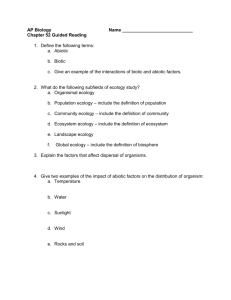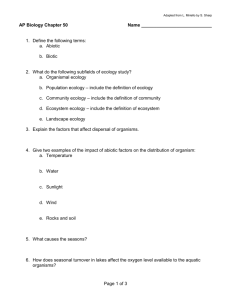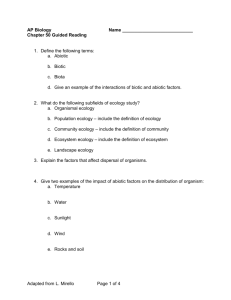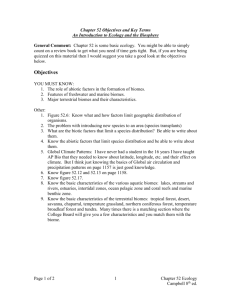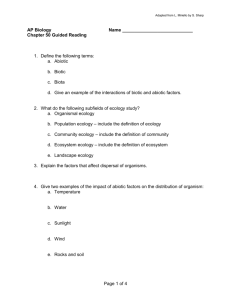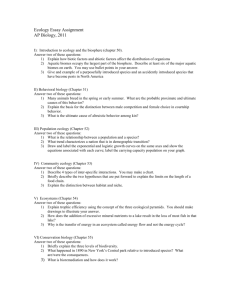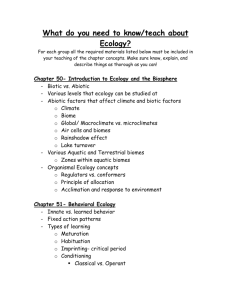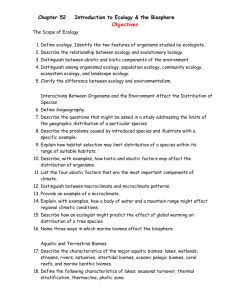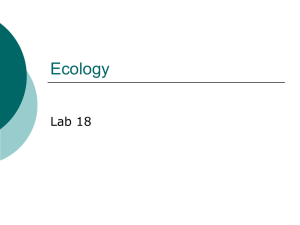AP Biology - Al Young Studios
advertisement
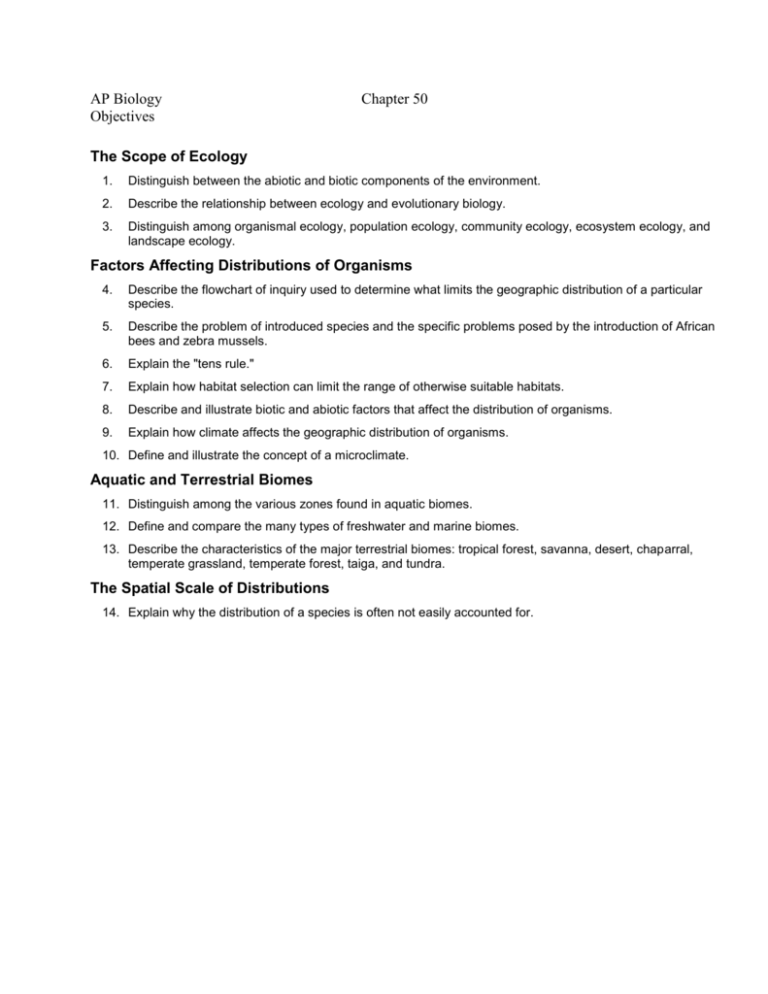
AP Biology Objectives Chapter 50 The Scope of Ecology 1. Distinguish between the abiotic and biotic components of the environment. 2. Describe the relationship between ecology and evolutionary biology. 3. Distinguish among organismal ecology, population ecology, community ecology, ecosystem ecology, and landscape ecology. Factors Affecting Distributions of Organisms 4. Describe the flowchart of inquiry used to determine what limits the geographic distribution of a particular species. 5. Describe the problem of introduced species and the specific problems posed by the introduction of African bees and zebra mussels. 6. Explain the "tens rule." 7. Explain how habitat selection can limit the range of otherwise suitable habitats. 8. Describe and illustrate biotic and abiotic factors that affect the distribution of organisms. 9. Explain how climate affects the geographic distribution of organisms. 10. Define and illustrate the concept of a microclimate. Aquatic and Terrestrial Biomes 11. Distinguish among the various zones found in aquatic biomes. 12. Define and compare the many types of freshwater and marine biomes. 13. Describe the characteristics of the major terrestrial biomes: tropical forest, savanna, desert, chaparral, temperate grassland, temperate forest, taiga, and tundra. The Spatial Scale of Distributions 14. Explain why the distribution of a species is often not easily accounted for.



